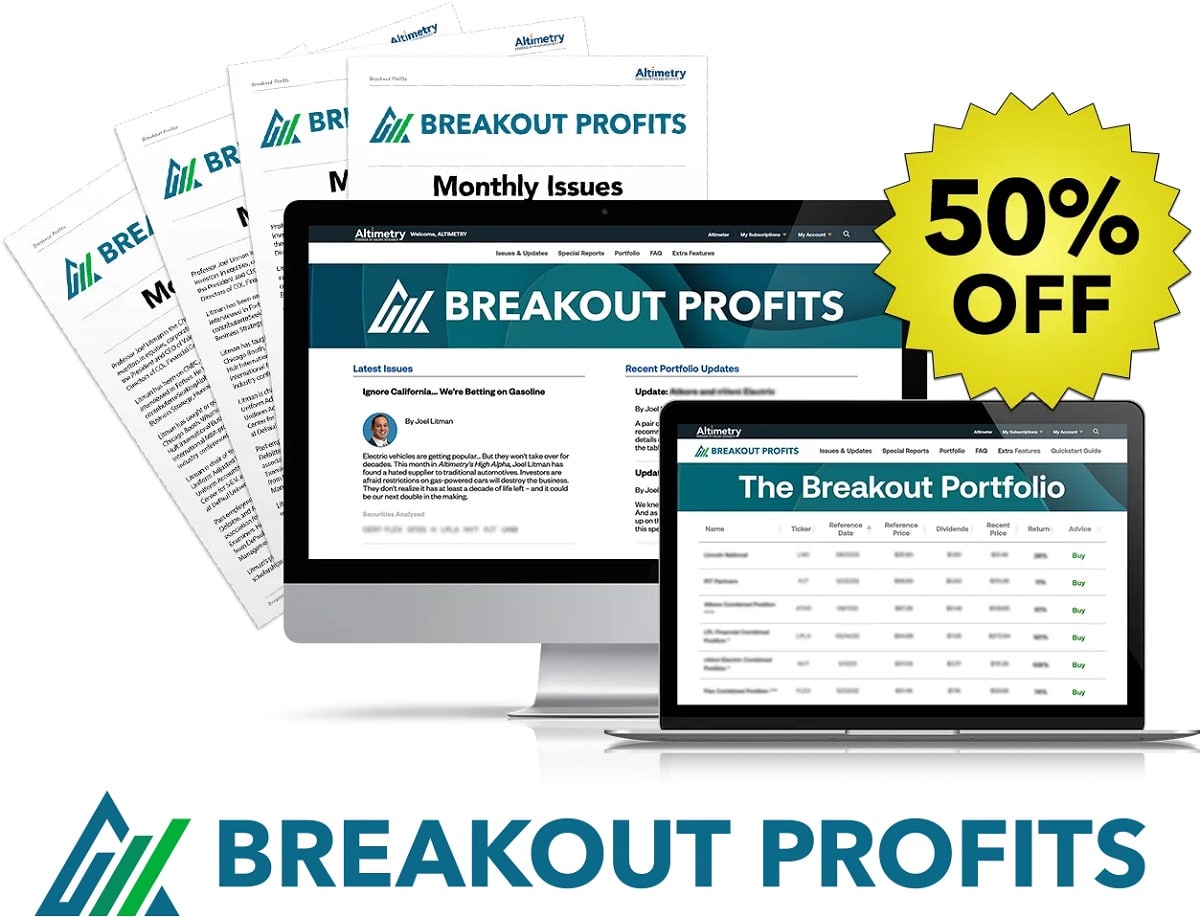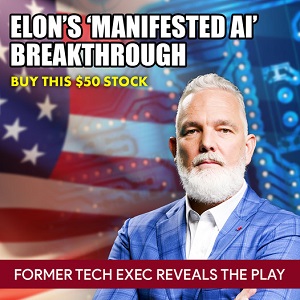I’ve been digging into investment pitches for years, and few grab you by the collar like The Big Secret on Wall Street.
Hosted by Porter, a seasoned market watcher, and joined by Jeff Brown, a tech-investing guru, this presentation drops a bombshell: America’s locked in a high-stakes, under-the-radar war for artificial intelligence (AI) supremacy, and it’s about to reshape everything—your portfolio included. They call it a crisis bigger than 9/11, the 2008 crash, or COVID-19, with trillions of dollars and millions of jobs on the line.
The pitch? Get in early on a handful of stocks tied to this “AI war” and ride a wave of generational wealth. It’s a hell of a story, but does it hold up? Let’s unpack it.
The presentation weaves a narrative around President Trump’s policies—tariffs, executive orders, massive tech deals—and claims they’re all part of a coordinated push to beat China to artificial general intelligence (AGI), the holy grail of AI that thinks smarter than humans.
It’s a “winner-takes-all” race, they say, with America’s economic and geopolitical future hanging in the balance. They point to eye-popping investments: $500 billion from Apple, $1.4 trillion from the UAE, Nvidia’s half-trillion chip push. Even Trump’s wild talk of annexing Greenland or strong-arming Ukraine for mineral rights gets tied into this grand strategy. The urgency is hammered home: act before July, when Trump’s rumored AI action plan could send these stocks soaring.
As someone who’s seen plenty of market hype, I’m intrigued but skeptical. The AI race is real, but is it this dire? And are these stocks really the golden ticket? Here’s my take.
The AI War: Fact or Hype?
What They’re Saying
Porter and Jeff argue that America’s restructuring its entire economy to win the AI race, particularly against China, which they paint as a juggernaut controlling 70% of rare earth minerals and filing six times as many AI patents as the U.S.
They liken it to World War II, when factories churned out tanks and planes. Today, it’s about energy (think nuclear and gas), production (chips and robots), and transmission (grid upgrades). The stakes? AGI, which could self-improve exponentially, leaving the loser in the dust forever. They call it the “singularitarian effect,” and it’s why Trump’s allegedly bypassing Congress with executive orders to fast-track mining, drilling, and chip factories.
They point to real moves: TSMC’s $100 billion Arizona foundries, SoftBank’s $500 billion data centers, and Trump’s orders to reopen coal plants and slash mining permit times from years to weeks. It’s all about securing the “spice”—energy and rare earths—to power AI. China’s DeepSeek AI model, which supposedly tanked Nvidia’s market cap by $600 billion in a day, is their Pearl Harbor moment, proof the threat is imminent.
Does It Add Up?
There’s truth here, but it’s dressed up in some serious drama. The U.S.-China AI race is legit—China’s 2017 AI plan and patent surge are well-documented, and the U.S. is pouring billions into AI via private firms like OpenAI and Nvidia.
The energy crunch is real too: data centers could eat up 25% of the U.S. grid by 2030, per the Energy Information Administration. Trump’s push for domestic resources—oil, gas, lithium—makes sense when you see China’s grip on 90% of rare earth processing. Policies like the 2020 critical minerals strategy and 2024 drilling orders back this up.
But the WWII analogy? It’s a stretch. WWII was a clear, visible crisis; AI’s more nebulous, a slow-burn race with no single “enemy.” The “DeepSeek” market crash sounds like a convenient plot point—there’s no public record of a $1 trillion wipeout tied to one AI model. And the “singularitarian effect”? Experts like DeepMind’s Demis Hassabis say AGI’s 5–10 years off, not months, and its impact is speculative. The presentation’s claim that losing means “no second chance” ignores how tech races evolve—Russia caught up on nukes, after all.
Don’t get me wrong: the resource angle is spot-on. AI guzzles electricity, and rare earths like neodymium are non-negotiable for chips. Trump’s deregulation, like overturning the Chevron doctrine, could unlock U.S. reserves worth billions (though $100 trillion is a wild guess). But calling it a “national emergency” feels like a sales tactic to light a fire under you. My gut says this is a real trend, but the doomsday vibe is overcooked.
The Stocks: Where the Rubber Meets the Road
The Game Plan
The pitch centers on three pillars—power, production, transmission—and five stocks to play them. They name two outright and tease three in reports, urging you to buy before July’s AI action plan. Here’s the lineup:
- BWX Technologies (BWXT)
- What It Does: Builds small modular reactors (SMRs) for the Navy and now AI data centers.
- Why It Matters: Nuclear’s the future for AI’s power needs—scalable, reliable, no carbon drama. BWXT’s up 89% in two years, but Porter sees a “decade-long growth story.”
- My Take: Nuclear’s a smart bet. SMRs are flexible, and BWXT’s got a moat with its Navy contracts. Treasury Secretary Scott Bessent’s push for new reactors adds tailwinds. But nuclear’s slow—permits and buildouts take years, even with deregulation. Still, BWXT’s cash flow and low debt make it a solid pick, though “epic” gains might take patience.
- The Hundred-Year-Old Money Machine
- What It Does: Likely Texas Pacific Land Corporation (TPL), a 130-year-old firm owning a million Permian Basin acres. It leases land to oil giants, collecting royalties with just 100 employees.
- Why It Matters: AI data centers need cheap gas, and TPL’s land has it in spades. Building centers at wellheads cuts transmission costs. Porter says it could “double or triple” on a big tech deal.
- My Take: TPL’s a cash machine—high margins, no drilling costs. The data-center-at-wellhead idea is clever; Microsoft’s already eyeing similar setups. But TPL’s stock isn’t cheap, and energy prices swing hard. A double’s possible, but tripling feels optimistic unless AI demand explodes.
- Coal’s Comeback
- What It Does: A debt-free coal miner with two billion tons of reserves and 17 mines.
- Why It Matters: Coal’s cheap and reliable for AI’s immediate power needs while nuclear ramps up.
- My Take: Coal’s a bold call. AI’s energy hunger could revive it short-term, especially with Asia’s demand spiking. But green policies and renewables loom large—coal’s a risky bet beyond a decade. The “fortress balance sheet” helps, but I’d tread lightly.
- Symbotic (SYM)
- What It Does: Makes AI-powered warehouse robots, already in 25 Walmart centers with 400 more planned.
- Why It Matters: Robots streamline manufacturing, key for AI’s supply chain. Jeff predicts a 3x–5x jump in 24 months.
- My Take: Symbotic’s a gem. Walmart’s buy-in is huge, and AI-driven logistics is a no-brainer for scaling production. But it’s a small-cap, so expect volatility. The 3x–5x target is doable if Amazon or others jump on board, but competition’s fierce.
- The AI Tollbooth
- What It Does: Likely Rambus (RMBS), licensing memory tech to chipmakers like Micron to fix AI’s “memory wall” bottleneck.
- Why It Matters: Its 36% free cash flow margin and tollbooth model scream profitability. Jeff sees 3x–5x upside.
- My Take: Rambus is a slick play—lean, scalable, and tied to every AI chip sale. The memory wall’s a real issue, and their IP’s in demand. But reliance on third-party manufacturers adds risk. The upside’s plausible if AI chip sales soar.
Reports and Extras
- The Fastest Gas in America: A natural gas firm building LNG terminals in 2.5 years, not 10, with $8 billion in income already. It’s undervalued and set to lead U.S. LNG exports by 2030.
- Cool Kid on the Block: A bonus pick cutting data center power use, critical for efficiency.
- Why It Matters: These round out the portfolio, hitting gas (power) and energy efficiency (transmission). The LNG play sounds like Cheniere Energy, a fast-mover in a tight market.
My Take on the Strategy
This isn’t your typical stock-picking pitch—it’s rooted in a macro trend I can’t ignore. AI’s energy demands are real, and the U.S. is scrambling to secure resources. The mix of stable (BWXT, TPL) and speculative (Symbotic, Rambus) plays balances risk and reward. Historical wins like Lockheed’s 400% Iraq War surge show what’s possible when capital floods a sector. The July deadline, tied to Trump’s AI plan, adds urgency, though I’m wary of banking on unconfirmed policy moves.
But here’s the rub: coal’s risky with green pushback, and the 3x–5x claims for Symbotic and Rambus assume perfect execution. The unnamed stocks in reports are a tease—transparency would build more trust. Overall, it’s a sharp strategy, but don’t drink the “generational wealth” Kool-Aid without a plan to manage volatility.
The Subscription: Worth $1,000?

What You Get
For $1,000 (down from $1,425), you get:
- Five stock reports (Hundred-Year-Old Money Machine, Coal’s Comeback, Fastest Gas, AI Tollbooth, Cool Kid).
- Weekly briefings every Thursday.
- Jeff’s AI research (worth $5,000).
- Livestream access to Porter’s $5,000 conference.
- A year of Asymmetry, a premium service with high-upside picks (worth $10,000).
- An eight-section portfolio, including “Forever Stocks” and insurance plays.
- A 30-day money-back guarantee.
My Take
At $1,000, it’s a steal for high-net-worth folks who’d pay $10,000 for Wall Street research. The ongoing updates and Asymmetry access sweeten the deal—Porter and Jeff have a track record with Nvidia and Bitcoin calls. But for regular investors, $1,000’s steep, especially without seeing all the stock names upfront. The 30-day guarantee helps, letting you test-drive the reports. If you’re serious about AI investing, it’s worth a look, but only if you’re ready to act fast and stomach the risks.
Big Picture: What’s at Stake?
This isn’t just about stocks—it’s about where America’s headed. AI’s reshaping industries, from data centers eating up power to robots retooling factories. The U.S.’s resource edge—oil, gas, lithium—gives it a shot to outmuscle China, but it’s not a slam dunk. Policy moves like drilling expansion and mining deregulation are real, but they face hurdles: environmental pushback, labor shortages, global competition. Beyond stocks, AI could spark booms in real estate (data center hubs), commodities (copper, uranium), and jobs (retrained tech workers).
Risks? Plenty. Tariffs could spark market chaos, AGI’s timeline is anyone’s guess, and coal’s a gamble in a green world. But the opportunity’s massive if you play it smart.
Final Verdict: A Smart Bet, with Eyes Wide Open
The Big Secret on Wall Street nails the AI megatrend—energy and production are the backbone of this race, and their stock picks are thoughtful, from BWXT’s nuclear bet to Symbotic’s robot revolution. The wartime narrative’s a bit over-the-top, but it drives home the stakes. At $1,000, the subscription’s a bargain for serious investors, but don’t expect instant riches. Check the reports, use the 30-day guarantee, and diversify to hedge the hype. The spice must flow, and with a clear head, you might just catch the wave.

































